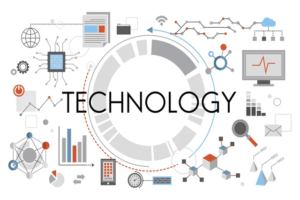In this article, the author has identified various trends and innovations in Remote Work Technology that have brought change in society in terms of remote work. It discusses phenomena that are now important in the context of modern work, namely, cloud work, cooperation media, the effects of AI, and cyber threats on distributed teams. For such reasons, this article underscores flexible and non-linear work models, virtual reality, and augmented reality, and offers a glimpse of the future and constant evolution of remote work in today’s workplace.
Introduction to Remote Work Technology
Remote Work Technology in the Digital Age is revolutionizing how we work. It allows employees to work from anywhere. The rise of remote work began with technological advancements. Innovations in digital tools help teams stay connected. This article explores key trends and innovations in remote work.
The Evolution of Remote Work Tools
Remote work tools have evolved significantly over the years. Initially, email was the primary communication method. Today, various platforms allow seamless collaboration and communication. Video conferencing tools like Zoom and Microsoft Teams became essential. These tools enable real-time discussions, enhancing teamwork across distances.
Moreover, project management software like Trello and Asana helps organize tasks. Teams can track progress and deadlines more efficiently. As remote work becomes commonplace, new tools will continue to emerge.
Key Trends Shaping Remote Work in the Digital Age
Five forces define the future of remote work technology. Growcoms supports flexibility measures and extends attention to the workers. These changes result in improving the output and satisfaction level of the employees.
Hybrid Work Models: Most work organizations implement different forms of dual structure arrangements. People work from home and the workplace at the same time. Such flexibility is useful in relating to the balance of work and other factors in everyday life.
Focus on Mental Health: Increasingly, employers also grasp that there is something they can and should be doing about mental health. They provide resources and support for remote workers. Virtual wellness programs and mental health days are becoming common.
Global Talent Pool: Companies can now hire talent from anywhere. This global approach brings diverse skills and perspectives. This makes the employers have a wide variety of talent, within the society.
Upskilling and Reskilling: People at work, therefore, need to change with the changing technology. Companies invest in training programs for skill development. Continuous learning helps employees stay relevant in their roles.
Cloud Computing: The Backbone of Remote Work
Cloud computing is essential for remote work technology. It allows easy access to files and applications from anywhere. Employees can collaborate in real-time, regardless of location.
Services like Google Drive and Dropbox provide secure storage. These platforms ensure that files are accessible and safe. Organizations can implement cloud solutions tailored to their needs. This adaptability makes cloud computing a critical component of remote work.
Collaboration Tools for Seamless Remote Work
Collaboration tools are vital for remote teams. They foster communication and enhance teamwork. Platforms like Slack and Microsoft Teams offer chat functionalities. These tools facilitate quick conversations and information sharing.
Document collaboration is also essential. Tools like Google Docs allow multiple users to edit simultaneously. This feature promotes teamwork and reduces miscommunication. Effective collaboration tools can lead to better project outcomes.
The Emergence of AI and Automation in Hydrogen Working
Today, Artificial Intelligence is improving remote work technology. Organizational technologies facilitate task automation and improve the efficiency of the system. For instance, the frequently asked questions by the clientele are answered by the chatbots in the shortest time. This automation relieves employees from other tasks.
AI also enhances data analysis. It enables companies to come up with the required data, which will help companies to come up with decisions that are required. With the use of AI, productivity and performance in organizations are enhanced.

Cybersecurity Innovations for Remote Teams
There are also many inherent risks when it comes to cybersecurity while practicing remote work. Organizations must guard information from threats posed by cyberspace. Anticipated technologies are critical when dealing with a dispersed workforce in cyberspace.
In this regard, multi-factor authentication commonly referred to as MFA, is useful in adding on security layers. It requires users to verify their identity through multiple methods. This approach significantly reduces the risk of unauthorized access.
Additionally, companies should educate employees on cybersecurity best practices. Regular training sessions can help staff recognize potential threats. By prioritizing cybersecurity, organizations can safeguard their remote workforce.
5G and Its Impact on Remote Work Efficiency
The rollout of 5G technology impacts remote work efficiency. This technology offers faster internet speeds and lower latency. Employees can upload and download files quickly.
5G also enhances video conferencing quality. Clearer connections improve communication between remote teams. As 5G becomes more widespread, remote work will become even more efficient. This is true, especially as the adoption of 5G is expected to increase the efficiency of remote working shortly.
Limitations of Virtual and Augmented Reality in Remote Communication
Said technologies are currently grouped within the class of emerging technologies that include VR and AR. They are altering ways through which people from different teams work remotely. VR allows users to engage in immersive environments. This capability can enhance training and virtual meetings.
AR can overlay digital information in the real world. This feature can assist remote workers by providing real-time information. As these technologies evolve, they will likely play a larger role in remote collaboration.
Future Innovations in Remote Work Technology
The prospects of Remote Work Technology in the Digital Age are promising. New technologies will remain on the rise which will go on changing the ways of working. Based on our analysis, possible trends may be prospected in the form of artificial intelligence/machine learning. They will increase the efficiency and effectiveness of operations of different activities of various companies and organizations.
Moreover, the demand for more user-friendly tools will increase. Companies will prioritize creating intuitive interfaces. This focus will ensure that all employees can use the technology effectively.

Conclusion: The Ongoing Transformation of Remote Work
Remote Work Technology in the Digital Age is continuously evolving. Companies must adapt to these changes to stay competitive. Innovations in collaboration tools, cloud computing, and AI enhance remote work efficiency. When people decide to implement flexibility in organizations, the health of everybody gets priority.
So the distant work has quite a future ahead of it. With the right tools and support, teams can thrive. By embracing these trends and innovations, organizations can build a successful remote work culture.
FAQs
What are remote work technologies?
Remote work technologies are tools and software that enable remote work.
How has remote work technology evolved?
Technological tools used in remote work have shifted from simple emailing to the usage of deep collaboration tools.
What do people gain when they work from home?
Advantages include; flexibility, the ability to access a larger pool of candidates, and most importantly, better work-life balance.
How does the cloud support remote work?
Cloud computing technology delivers authorized access to files and applications anytime, anywhere.
How does AI fit into the equation of working remotely?
AI means the robotization of jobs, improving and optimizing information processing.
